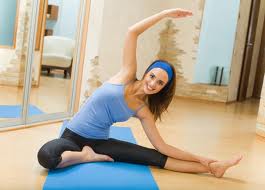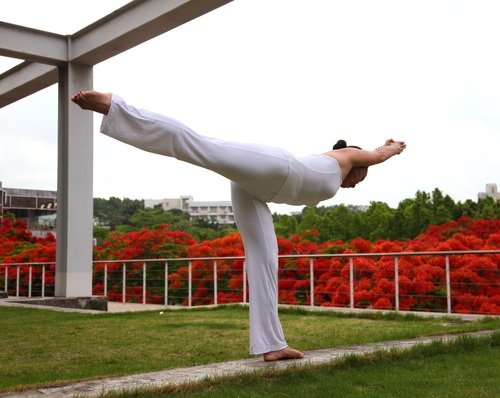It's
technically not possible to be at the gym all the time. When you can't
be at the gym and can't afford to miss the training session either, then
you can implement portable resistance tubing for completing your
full-body training session. Whether you are a beginner or a
professional, warm-up stretches are an important part of the resistance
tubing workout. Once the stretching exercises improve flexibility, you
can start with the actual workout routine.
Military press is a simple exercise for which the performer has to stand upright in the middle of the band with a straight posture and feet at least shoulder-width apart. Stay straight and stretch your arms up. Keep your back straight and abdominal muscles tight. Gradually lower your arms and repeat the military pose.
Bench pose requires the performer to keep the center of the tubing over the chest and grab each of the handles. Position your thumbs at the armpits and keep away from the anchor. Extend both the arms fully in front of the body, hold for a few seconds and then bring it back to the starting position.
Seated row is a resistance tubing workout in which the performer must be seated firmly on the ground while holding on to one handle. Sit in a way that there is no tension in the elastic when your arms are fully extended. Take a position in which the knees are bent and now pull the handles to an extent that it forms right angles to the elbow. While keeping the spine straight, move your arms back to the starting position.
Triceps extension can also be practiced with resistance tubing. Keep one step on the tubing and pull it behind your head. Now position one elbow close to your head, hold for a while and reduce it to the starting position. After a while switch hands. The other arm can be used to hold the elbow close to the head in the right position.
Kneeling crunches are good for the abdominal muscles. Now all you have to do is rest the center part of the tubing over your head and let the handles drop out. Kneel down in a way that the anchor remains behind you. Hold both handles and let them pass above your ears and elbows. Start the crunches by bending at your waist and bring the head towards the knees. Go back to the starting position and then repeat the kneeling crunches.










